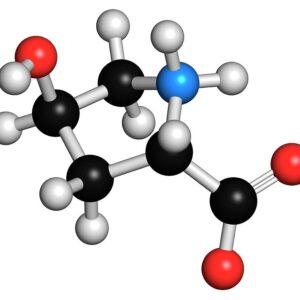Dichloroacetate
Dichloroacetate (DCA) was initially used for the treatment of relatively rare metabolic disorders in children, such as lactic acidosis. Then a research team from Canada discovered that this compound could also be used in cancer treatment. DCA primarily functions as an energy activator in cell mitochondria, but there are metabolic dysfunctions in tumor tissues.
Description
Dichloroacetate (DCA) is used in cancer treatment. It is known that cancer cells have disrupted normal energy metabolism, which living organisms obtain from nutrients in the presence of oxygen. Cancer cells have learned to utilize sugar without the presence of oxygen. As a result, they lose much of the available energy in the body, and cancer begins to initiate a primitive survival mechanism. DCA is able to partially restore normal mitochondrial function. As a result, normal cell death, known as apoptosis, occurs again. DCA also has a cancer cell regenerative effect, or as experts say, a redifferentiating action. In medicine, this allows DCA to be combined with other therapy methods that work in a similar way, such as a low-carbohydrate diet, therapeutic hyperthermia, and others.
The anticancer properties of dichloroacetate have been described in many literature sources, but its clinical effectiveness in cancer treatment has not been confirmed because large-scale clinical trials are not allowed. The justification for this is cited as such adverse drug effects as neurotoxicity and potential carcinogenic activity. However, despite these facts, the use of DCA has been increasingly described in recent years due to the growing interest in its ability to alter cancer cell metabolism.
The analysis of DCA’s mechanism of action helps to better understand and assess why it is selectively effective against cancer cells. The use of DCA together with traditional cancer treatment methods such as chemotherapy and radiation therapy, as well as with other medications, including biological agents, has also been successful. DCA is recommended to be used together with other biologically active substances to enhance its bioavailability and absorption in tissues. The results described above promote further extensive research. It is known that DCA has the ability to act on and suppress and destroy cancer stem cells to stop tumor growth and cell proliferation. Due to these research findings, DCA continues to be used in cancer treatment.
The activity of DCA described above is directly aimed at its ability to change the metabolic characteristics of cancer cells. Despite the presence of oxygen, cancer cells have learned to survive by taking energy from incomplete glycolysis due to reduced mitochondrial activity. This is referred to by researchers as the Warburg effect. As a result, there is increased production of lactic acid products (lactates). Excessive glycolytic activity leading to lactates near the tumor creates metabolic acidosis (acidic microenvironments). In turn, lactates in surrounding tissues promote cancer cell proliferation and inhibit apoptosis mechanisms in tumor cells. This is determined by glycolysis enzymes that manage to inhibit and suppress it. The mechanism of action of DCA is primarily based on altering metabolism in cancer cells by suppressing the activity of pyruvate dehydrogenase kinase, transforming the metabolism primarily from increased glycolysis to oxidative phosphorylation. Activating PDH promotes pyruvate oxidation in mitochondria, thereby creating metabolic disturbances in cancer cells. As a result, there is a significant energy deficit in tumor tissues. Additionally, reduced lactate formation reduces acidity in cancer tissues, thus inhibiting tumor growth and dissemination. The influx of pyruvate into mitochondria promotes the release of cytochrome C and other apoptosis-inducing factors, significantly reducing the survival of cancer cells.
For clinical use, pharmaceutical companies have developed DCA preparations for both oral and parenteral use. Recommended doses range from 10 to 50 mg/kg per day. When using DCA, there are no indications of toxic side effects that cause significant changes in blood composition, liver and kidney indicators, or cardiotoxicity. This means that the use of DCA in patients is safe. Gastrointestinal disturbances may rarely occur. Peripheral neuropathy observed in clinical trials is the most common limitation on the use of these preparations. To reduce DCA-induced neuropathy, it is recommended to administer antioxidants simultaneously and individually select the DCA dose based on body weight. This effect is also mitigated by the parenteral use of the preparation.
A commonly used strategy in cancer treatment is to combine various drugs to achieve the greatest possible effect. This allows for increased effectiveness while reducing the total dose and preventing toxic effects. DCA is often combined with other drugs used in chemotherapy. It also inhibits the development of tumor cell resistance to chemotherapy drugs. For example, in lung cancer treatment, DCA is combined with paclitaxel. It is often used in combination with doxorubicin and cisplatin. Such combinations are used in the treatment of bladder cancer and hepatocellular carcinoma when resistance has developed.
The recommended oral dose is typically 15 mg/kg per day. After two weeks of use, there is a one-week break, after which intravenous administration can be started at a dose of 30 mg/kg twice a week, diluted with 0.9% sodium chloride solution up to 250 ml.
References:
https://www.ncbi.nlm.nih.gov/pmc/articles/PMC6885244/






Reviews
There are no reviews yet.